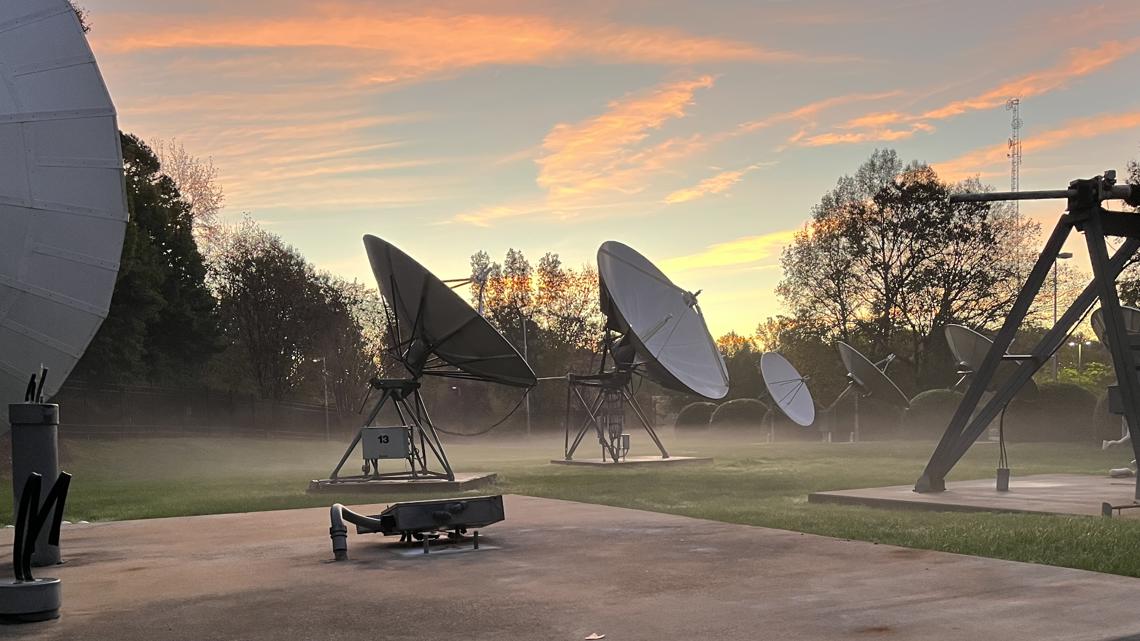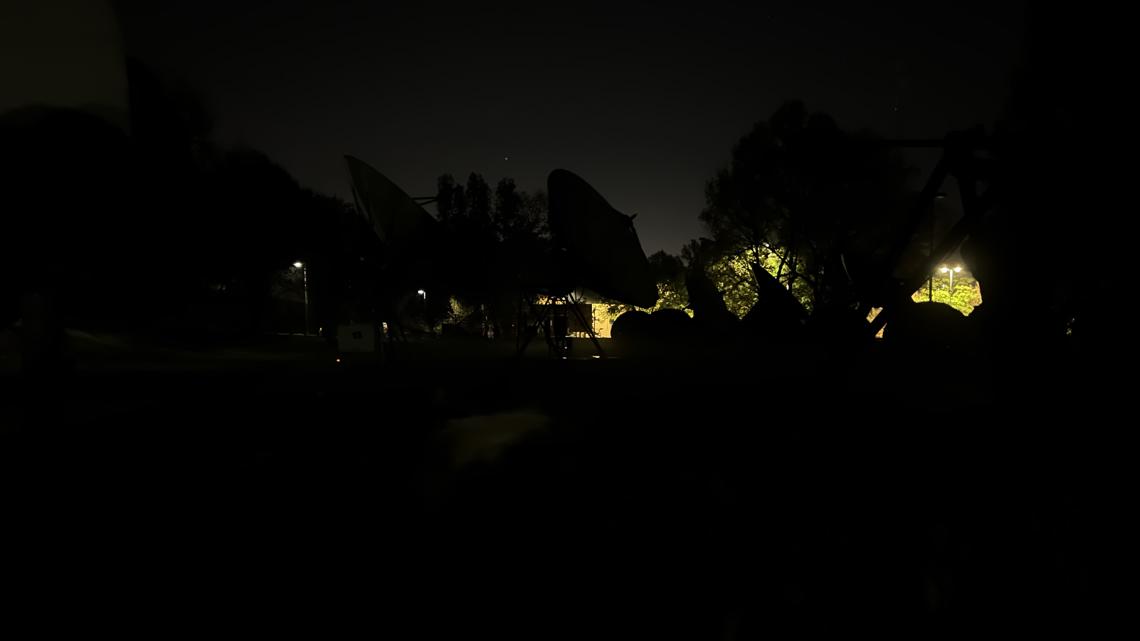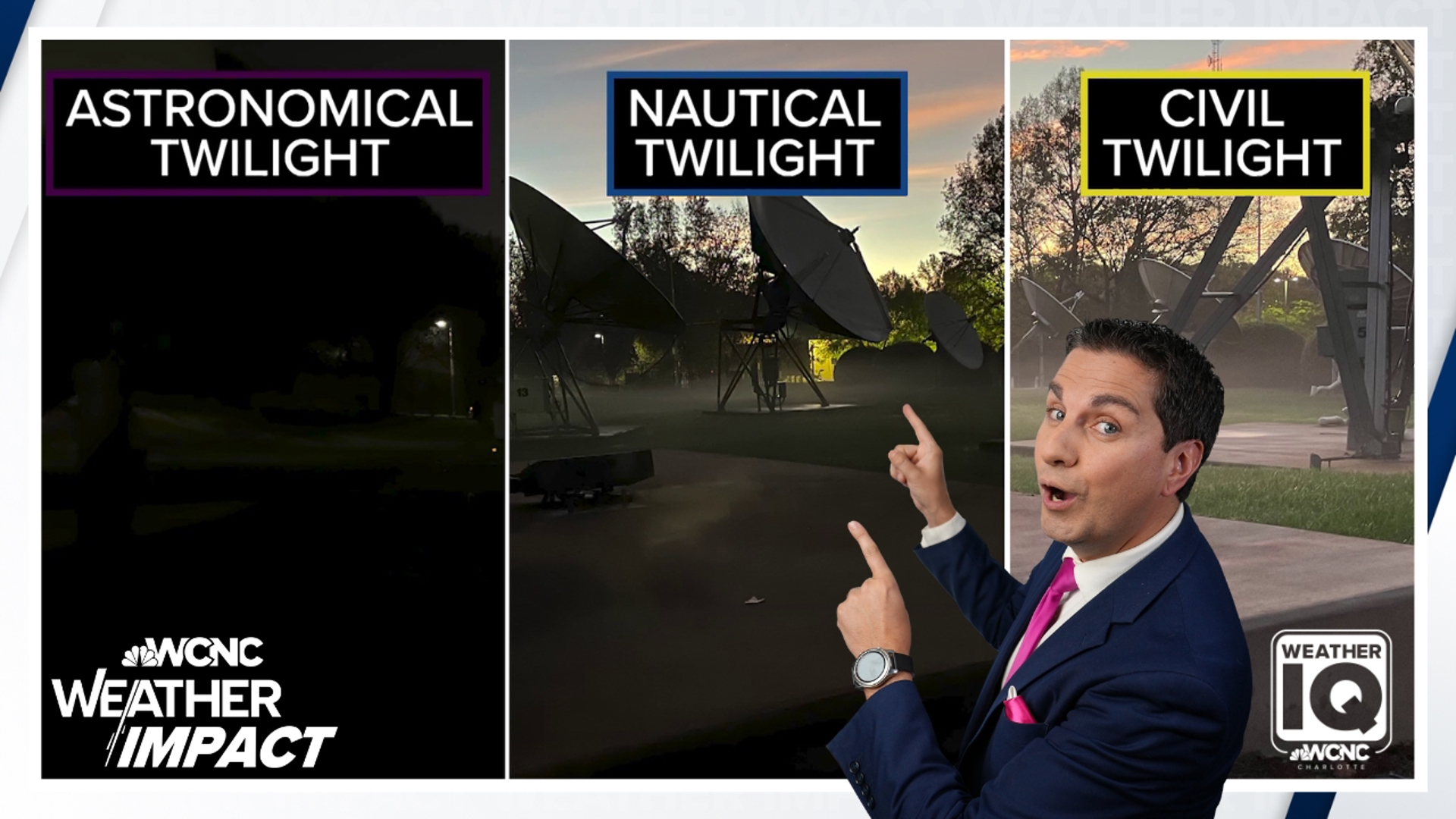CHARLOTTE, N.C. —
Understanding the three stages of twilight
Before the sun rises and after the sun sets, the sky transforms during what we know as twilight.
Twilight is that soft glow to the sky when the sun is below the horizon caused by the refraction of the sun's rays.
It's also known as dawn before sunrise and dusk for the period after sunset. Dawn and dusk last usually over an hour and a half. Looking at Charlotte's twilight lengths through the year, the shortest is an hour and 25 minutes and the longest is an hour and 48 minutes.
But twilight is divided into three stages: civil, nautical and astronomical twilight. Let's learn about each phase and their advantages.
Civil twilight
Civil twilight is when the sun is between 0 degrees and 6 degrees below the horizon. Civil twilight in the evening comes after the sun sets and in the morning, before the sun rises.
During this time, there’s enough light for most outdoor activities without the need for additional lighting. This is the ideal time to go on a late afternoon or evening stroll, depending on the time of year.
In photography, this is known as the "golden hour." This is also when you see the most vibrant colors during and immediately following a sunset and before a sunrise.
- Civil advantages: Best for outdoor activities and photography.


Nautical twilight
Nautical twilight takes place when the sun is between 6 degrees and 12 degrees below the horizon. This stage is especially important for sailors and navigators, as the horizon remains visible at sea, allowing for navigation using stars.
While the sky darkens, the faint light still enables mariners to identify the outlines of their vessels and the water’s surface, making it a crucial time for maritime activities.
For photography, in the evening, the end of civil twilight and nautical twilight are known as the "blue hour."
- Nautical advantages: Perfect for stargazing, celestial navigation, and capturing dramatic landscapes.


Astronomical twilight
Astronomical twilight occurs when the sun is between 12 degrees and 18 degrees below the horizon. This is the first stage of twilight in the morning and the last phase during the evening.
At this stage, the sky darkens making it tough to see without artificial light. Stars become prominent, making this the prime time for astronomers and stargazers.
- Astronomical advantages: Ideal for a warmer star gazing, comet viewing, night photography, and experiencing true darkness.


Contact Chris Mulcahy at cmulcahy@wcnc.com and follow him on Facebook, X, Instagram and TikTok.

